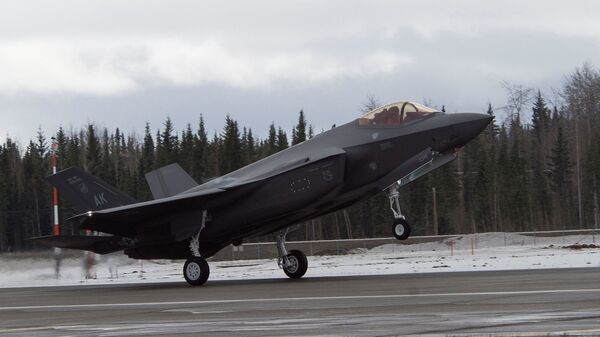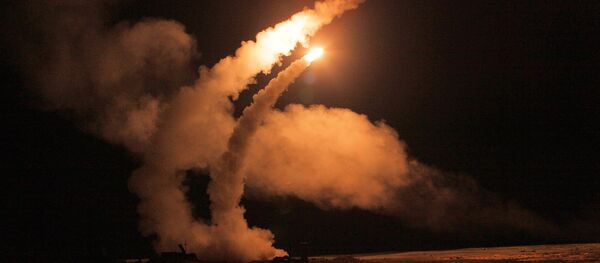https://sputnikglobe.com/20200526/pentagon-lockheed-martin-tone-down-f-35-stealth-coatings-bubbling-and-blistering-issue-1079421467.html
Pentagon, Lockheed Martin Tone Down F-35 Stealth Coating's 'Bubbling and Blistering' Issue
Pentagon, Lockheed Martin Tone Down F-35 Stealth Coating's 'Bubbling and Blistering' Issue
Sputnik International
Previously, the US Department of Defence classified the issue as a Category 1 deficiency, the most serious, potentially preventing the jet's usage. Now, the... 26.05.2020, Sputnik International
2020-05-26T14:08+0000
2020-05-26T14:08+0000
2022-11-15T08:48+0000
https://cdn1.img.sputnikglobe.com/img/107907/21/1079072102_0:136:2807:1715_1920x0_80_0_0_3bea12a3a1a8e3cf3df24f8650b8eaf7.jpg
Sputnik International
feedback@sputniknews.com
+74956456601
MIA „Rosiya Segodnya“
2020
Tim Korso
https://cdn1.img.sputnikglobe.com/img/07e6/03/0d/1093831826_0:0:216:216_100x100_80_0_0_e3f43a960af0c6c99f7eb8ccbf5f812c.jpg
Tim Korso
https://cdn1.img.sputnikglobe.com/img/07e6/03/0d/1093831826_0:0:216:216_100x100_80_0_0_e3f43a960af0c6c99f7eb8ccbf5f812c.jpg
News
en_EN
Sputnik International
feedback@sputniknews.com
+74956456601
MIA „Rosiya Segodnya“
Sputnik International
feedback@sputniknews.com
+74956456601
MIA „Rosiya Segodnya“
Tim Korso
https://cdn1.img.sputnikglobe.com/img/07e6/03/0d/1093831826_0:0:216:216_100x100_80_0_0_e3f43a960af0c6c99f7eb8ccbf5f812c.jpg
military & intelligence, newsfeed, us, f-35, f-35b
military & intelligence, newsfeed, us, f-35, f-35b
Pentagon, Lockheed Martin Tone Down F-35 Stealth Coating's 'Bubbling and Blistering' Issue
14:08 GMT 26.05.2020 (Updated: 08:48 GMT 15.11.2022) Previously, the US Department of Defence classified the issue as a Category 1 deficiency, the most serious, potentially preventing the jet's usage. Now, the Pentagon considers the matter "closed", although no solution to it was ever provided, citing a poor balance between the cost of fixing the problem and the threat that it poses to the jet.
The "bubbling and blistering" that was earlier observed on certain models of F-35 jets after prolonged flights is not noticeable to the human eye and the entire issue should be viewed in a broader context, Lockheed Martin test pilot Billie Flynn told the website Defence News. At the same time, he cited engineers as saying that if an F-35 jet is to serve for decades, the exposure to extreme conditions causing such problems should be dealt with.
"I don’t know if I really ever saw much after a flight. I just knew that our engineers had told us about [the problem]. An engineer […] would see that it would be hotter than they predicted, which would lead them to tell us: 'If this airplane is going to last 40 years long, then we have to manage this exposure'", Flynn said.
The pilot went on to notice that the bubbling and blistering only appeared on F-35B and F-35C jets after prolonged missions, which rarely occur in real combat scenarios. Flynn said that he knows of no "combat scenario" where a jet would be subjected to this kind of environmental stress.
"Make a run at 700 knots, make another run at 700 knots, go to an aerial refueling tanker, get fuel for myself […] and then race out again and again and again. Repeat this cycle for four- and five-hour missions. [...] That’s extreme speed, and that’s repeated flights in those environments", the test pilot added.
The issue was first reported by Defence News back in 2019 and was classified as a Category 1 deficiency by the Pentagon soon afterwards, meaning that the US military considered it a serious threat to operating the fifth-generation aircraft. However, as of December 2019, the issue is considered to be "closed", although no solution was rolled out. The F-35 Joint Program Office stated that the advantages of fixing the issue were not worth the costs.
Instead, the Pentagon suggested limiting the time pilots can spend at hypersonic speeds with full afterburner on to less than a minute, as this would prevent permanent damage to the F-35's stealth coating, which reduces the jet's visibility to radars.






